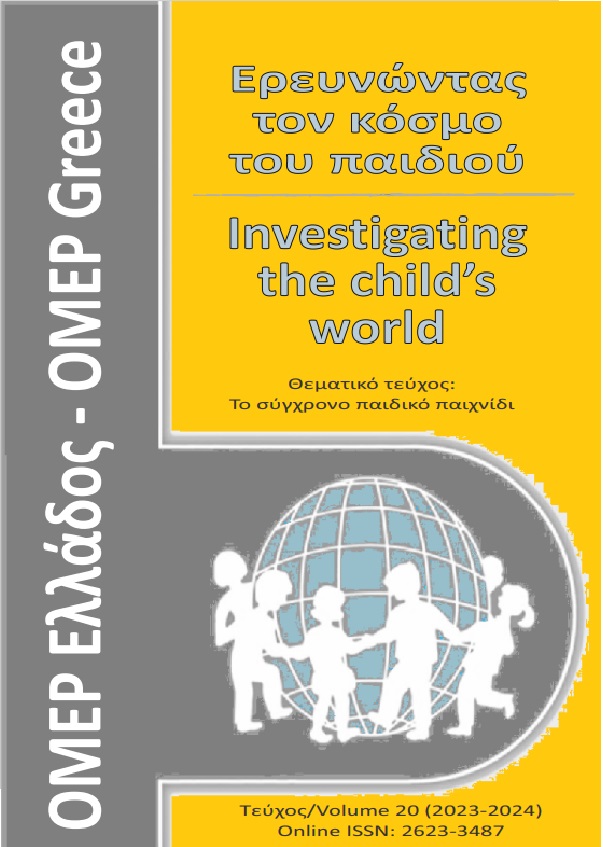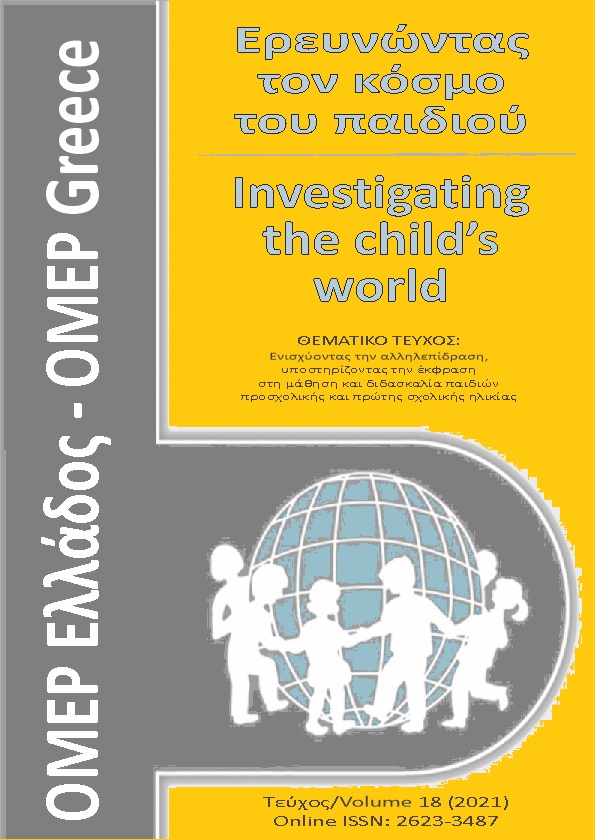Risky play in Greek kindergarten: Perspectives and practices
Abstract
Researchers from diverse cultural contexts are increasingly examining the equilibrium between children's safety during play and children’s need to engage in risk-taking behaviors and test their capabilities at various levels. A recent search of the Greek literature revealed a paucity of research investigating children's risky play in Greek kindergarten settings. Within this context, the present study aimed to explore Greek kindergarten teachers' perceptions of the concept of risky play and their propensity to permit such play in kindergarten settings. Twenty teachers employed in public kindergartens participated in the study, and data collection was conducted through semi-structured interviews. The interviews were transcribed and analyzed using the thematic analysis method. Data analysis revealed, among other things, that participants defined risky play as children's behaviors perceived as posing a risk to their physical well-being, such as climbing on tables or classroom benches, congregating in yard games, or climbing trees and structures. While the majority of teachers appear to recognize children's enthusiasm when engaging in risky play and can discern the benefits derived from these actions, they simultaneously express apprehension regarding the 'extreme' enthusiasm of children of this age group and attempt to mitigate it through prohibitions, which are predominantly imposed in advance. The results of the research are discussed from the perspective of teachers' professional development.
Article Details
- How to Cite
-
Birbili, M., & Kiriakidou, M. (2024). Risky play in Greek kindergarten: Perspectives and practices. Investigating the child’s World, 20, 87–100. https://doi.org/10.12681/icw.35417
- Section
- Scientific articles & educational projects

This work is licensed under a Creative Commons Attribution-NonCommercial 4.0 International License.
Authors who publish with this journal agree to the following terms:
· Authors retain copyright and grant the journal right of first publication with the work simultaneously licensed under a Creative Commons Attribution Non-Commercial License that allows others to share the work with an acknowledgement of the work's authorship and initial publication in this journal.
· Authors are able to enter into separate, additional contractual arrangements for the non-exclusive distribution of the journal's published version of the work (e.g. post it to an institutional repository or publish it in a book), with an acknowledgement of its initial publication in this journal.
· Authors are permitted and encouraged to post their work online (preferably in institutional repositories or on their website) prior to and during the submission process, as it can lead to productive exchanges, as well as earlier and greater citation of published work.




